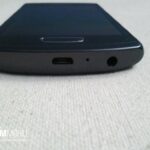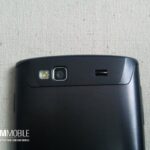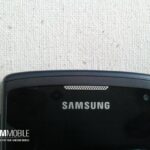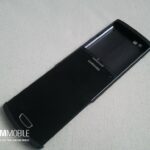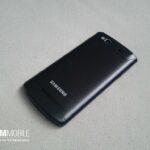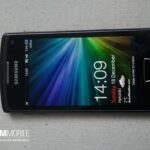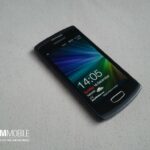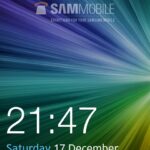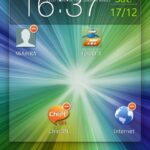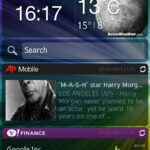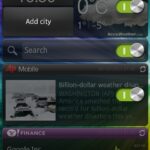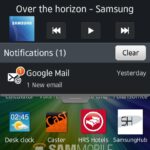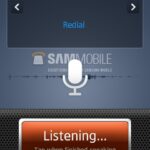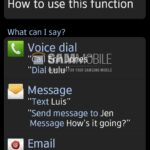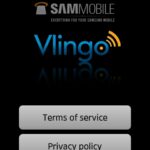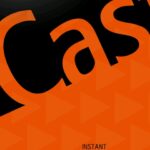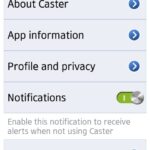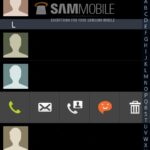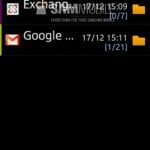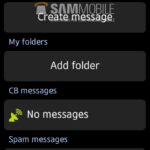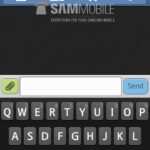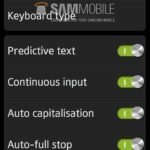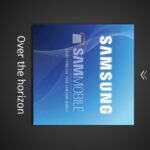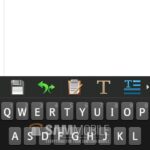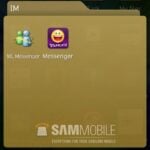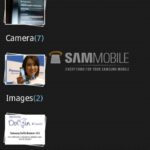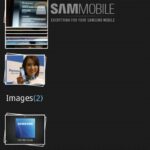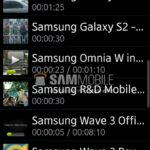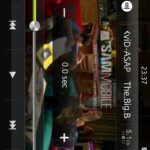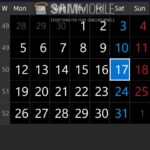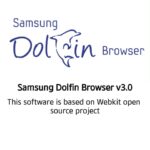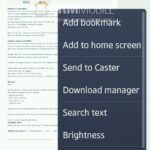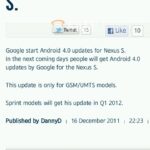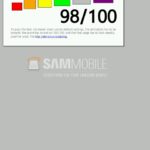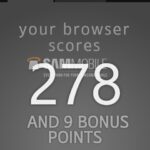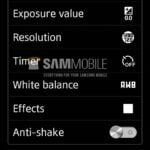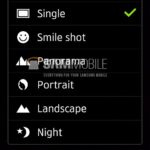Review: Samsung Wave 3 with bada 2.0 – Better, faster and stronger?
Intro:
During IFA 2011 (September) Samsung annouched their successor to the Wave I and Wave II, which is of course the Wave 3. The Wave 3 will be bada’s flagship device for this year.
Samsung has also stated in their pressrelease that they believe that ‘the Wave 3 is a smartphone that will truly deliver Samsung’s commitment to the bada platform in the mobile industry’.
As you can see in the commercial of the Wave, you’ll see that Samsung’s target for the Wave 3 will be users that like to have a sleek and stylish device with fast performance and a easy UI.
With ChatON, Social Hub and Music Hub they will try to bring a complete user experience.
The Wave 3 haven’t got any new hardware like the Wave I (for example Hummingbird chipset and Super AMOLED), so it hasn’t got Samsung’s Exynos processor (Galaxy S2) or any other dualcore processor like Nvidia’s Tegra 2 (Galaxy Tab 10.1) or TI Omap 4460 (Galaxy Nexus) but instead Samsung decided to use a fast single core processor from Qualcomm which is clocked at 1.4GHz. Samsung also decided to use a Super AMOLED display which has a PenTile Matrix instead of the Super AMOLED Plus which has a true RGB matrix.
The reason why Samsung haven’t used any new available hardware can be a strategic reason, because now they are more focusing on the software side than on the hardware. Samsung have also learned much from the Wave I they have more experience now and we are looking forward how they will use those experience in the further development of bada. This review is based on the XXJKC firmware.
Specs:
|
Network |
HSDPA 14.4/HSUPA 5.76 900/2100 |
|
Processor |
1.4GHz Processor |
|
Display |
4” WVGA Super AMOLED |
|
OS |
bada 2.0 |
|
Camera |
Main(Rear) : 5 MP AF with LED Flash |
|
Video |
Codec : MPEG4/H.263/H.264/DivXPlayback/Recording :HD(720p)@30fps |
|
Audio |
Codec : MP3/AAC/AAC+/eAAC+/WMA/AMR/ MID/WAV3.5mm Ear Jack, Stereo FM Radio with RDS |
|
Value-added Features |
Samsung Apps |
| Samsung Kies 2.0 | |
| Samsung ChatON mobile communication service | |
| Samsung TouchWiz | |
| Social Hub- Integrated Messaging(Email, IM, SNS), Contacts/ Calendar Sync- Basic: POP3/IMAP Email & IM | |
| Music Hub | |
| Polaris Office | |
|
Caster |
|
| A-GPS/Glonass | |
|
Connectivity |
Bluetooth v3.0USB 2.0 + HSWiFi 802.11 b/g/nWiFi Direct |
|
Sensor |
Accelerometer, Compass, Proximity, Light |
|
Memory |
512MB(RAM) + 4GB Internal Memory, microSD (up to 32GB) |
|
Size |
125.9 × 64.2 × 9.9 mm, 127g |
|
Battery |
Battery (Standard) Li-on, 1,500mAhTalk Time : Up to 430 hoursStandby Time : Up to 500 minutes |
Box
When you are buying the Wave 3 you’ll see that the packaging is pretty small. It will come in a small box which is smaller than the box of the first Wave, even that the Wave 3 is bigger than the first Wave!
Inside the box you’ll find the usual quick start guides and also the usb charger, usb cable and a pair of headphones. All accessories are in the colour black. Unfortunately Samsung didn’t include their USB adapter charger but instead they decide to include the old fashion USB charger which we also saw in the box of the Wave I and the Wave II.
Design:
When you are looking at the Wave 3 you will see some similarities with the Wave I and Wave II.
All 3 devices have a metal chassis, but this time it has a slide out system which is really great. You can slide it up to about 90% of the phone. Under the cover you will find the simcard slot, a slot for the MicroSD card and of course the battery.
On the back you will find the 5 megapixel camera with a LED flash and the speaker.
The front of the device is dominated by a 4 inch Super AMOLED display with a resolution of 800 x 480. On the top you will find the ear speaker, some sensors (light and proximity) and also a VGA front camera.
On the bottom side of the front you will find the 3 keys. First a hardware home key in the middle. On the left and right side you will find a call and a call end key, both are touch sensitive.
On the top of the device you won’t find any keys or ports (for example: charging) but you will find all ports on the bottom. There you will find a micro usb port, the 3.5mm headphone jack and a small hole which is the microphone.
On the left side you will find the volume rockers and on the right side you will find a lock button, both are raised enough and are easy to press.
In our opinion the Wave 3 is good looking handset which has a premium look and feel. Downside of the metal chassis is that the phone can be slippery because the back doesn’t have a ribbed design like some Galaxy devices but instead it has a flat design.
Bada 2.0:
During the bada developer day at Mobile World Congress 2011 in Barcelona Samsung announced bada 2.0. The upgrade will deliver new and improved features to bada, like support for Near Field Communication (NFC), Web apps (HTML5 and WAC), voice recognition, scalable UI, full multitasking and more!
On top of bada 2.0 you will find Samsung’s TouchWiz User Interface. TouchWiz on bada 2.0 has a lot similarities with TouchWiz for Android devices (example: it also has a 4×4 grid app menu). A lot of apps are having a new interface, except a few like the like the email app and the dialer app. The handy pull down notification bar is also included.
Live Panel & Home screen:
Live Panel is the first page of the home screen where you can put widgets on that can be organized in a vertical scrollable list. There are a few stock widgets for the Live Panel like clock (different time zones), weather, news, stocks, calender and you can also add someone from your contacts.
On the home screen you can add widgets just like in bada 1.x, but in 2.0 you can add app shortcuts, contacts and folders. With a pinch you can add more homescreens and remove them as well.
In the future Samsung will also add smart home screens which are similar to Live Wallpapers which can find on Android.
Menu
As mention earlier the menu has been changed, in the bada 1.x you had a 3×3 grid app view now in 2.0 you’ll have a 4×4 grid app view and you can also create folders. With a pinch you’ll get a overview of the menu screens.
Voice commands:
By pressing the home button twice the voice command screen will open and you can use instructions for calling, sending a message, sending emails, updating social networks, searching on google or playing music. At the moment you can use it in 7 languages: English (UK), English (US), French, German, Spanish, Italian and Korean.
With voice output it can also read out your incoming messages or emails, but unfortunately this feature isn’t working at the moment since there no voices to download .
Samsung has used the services of Vlingo to develop voice commands. Samsung had a similar app on bada 1.0 but then with a better user interface (my opinion) but they decided to remove it from the final 1.0 because it wasn’t stable.
ChatON:
ChatON is Samsung’s crossplatform messaging service. At the moment you can use it on bada 2.0 and Android. In the future you also use it on featurephones, iPhones and Blackberrys. There will also be a webclient. With ChatON you can chat with your friends and you can send text, music and photos.
ChatON is a nice service but unfortunately we noticed that our battery was draining faster than before when we were using it with push notification. We also noticed that some messages arrived much later than expected. Its clear for us that Samsung has to polish it more before the mass can use it.
Caster:
Samsung has develop caster for sending data from your pc to your bada device and vice versa. With Caster you can send photo’s, videos, map locations, url, text and numbers.
To send data to your bada device you’ll need to install a browser plugin, at the moment you can only download a plugin for Internet Explorer (Google Chrome plugin will come soon!). Once you are opening the Caster app you’ll get a message to login with your Samsung account. Once you have done that you can use Caster. Its easy to use but its not flawless (yet). We noticed that there is sometimes a delay between sending and receive the data that you have sended from your pc. Samsung will need to improve this just like ChatON.
Multitasking:
With 2.0 you can enjoy full multitasking. In 1.x there was limited multitasking, because you could only run 1 bada app at the same time. In 2.0 Samsung has removed this limit and added multitasking to the platform unlike other platforms bada supports full multitasking.
The Wave 3 have 512mb of RAM so multitasking should be flawless. We didn’t had any problems with it generally the phone is still fast even with a couple of apps running in the background. We only noticed some slowdowns when the browser is loading a page in the background of download email attachments.
Holding the middle key you can easily switch between open apps and you can also see which app is actually running in the background and you can easily kill them off one per time or all in once single tap. In case you are running on low memory bada will automatically kill some apps to free up RAM, but the data of an open app will remain once you open the app.
Calling & Messaging:
The call quality is as usual with Samsung devices very good. We didn't had any problems with receiving and making calls. The persons who I have talked could also hear me clearly.
Sending and receiving sms text messages was also a flawless experience.
Contacts:
The contacts app has some similarities with 1.x only the interface has changed a bit. Feature wise it remains the same as in 1.x. The contact sliding (slide to call of sending a message) feature in 1.x was convenient and I have to say I’ve used it a lot, in 2.0 there are some changes. You can still slide but this time it doesn’t matter which side you are sliding, so left to right or right to left it doesn’t matter because you’ll get the same options. Once you are sliding you will get the option to call, send a message, video calling, use ChatON (optional) or delete.
Messages:
The messages app has a new look but also has the basic features of 1.x. What’s new is the advanced option where you can find options to scheduled messages (was also included in 1.x), create folders, inbox for carrier messages and a spam list. The sliding feature has also changed, sliding on a thread you’ll get the option to call, video call, block or delete.
The keyboard has changed and its even better now because there is more room between the keys so you can easily type on it.
The options like predictive text and continuous input (T9 Trace) are also present just like in 1.2.
You can also compose a message using your voice, at the moment you can only use it with a few languages like: English, German, French, Spanish, Italian and Korean.
Social Hub 2.0:
Social Hub is a app that combines your messages, emails and social network feeds. With Social Hub you can organize all your messages and emails and you can also compose emails or messages. You can also update your facebook status or send a tweet.
Some users may find that the app is useless and a bit cluttered, well its more a personal flavour. Some people like to have everything combined and some people like to have it separate.
But we noticed that there are some duplicate options, which can be cluttered. For example sending a tweet, opening Social Hub you’ll see your tweets and in the bottom you have a option to ‘update your status’ (sending a tweet). But once you have tapped on the top left icon, you’ll see your social network feed(s). Tapping on your feed which you would like to use you see your feed, but this time with more options. For example, Twitter you will see the options: New Tweet, favourites, lists and @ icon where you can see tweets that you have received.
Switching over to Feeds you can see your received or sended direct messages (Twitter).
Multimedia:
Music:
The music app is almost the same as in 1.x. Once you have flipped the phone in landscape you will noticed that the CD carousel has disappeared and a album cover view is the replacement you’ll get, but this time scrolling is much smoother and faster! Unfortunately Samsung has decided to remove the music recognition option which was built-in inside the music app in 1.x.
The sound quality is average through the speaker of the device. Its good but don’t think you can steal the show with it on a party. Since the speaker is on the back of the device sound can be muted when the device is laying on its back on a table for example.
Music Hub:
Music Hub is a service which is powered by 7digital where you can buy music. You can search through more than 12 million songs! You have the possibility to listen to a preview of a couple of seconds before buying it.
Gallery:
In bada 1.x you had Media Browser which was a basic app for viewing photo’s and videos. In 2.0 the Media Browser is replaced by the Gallery app, which looks a lot like the Gallery app of Android. The Gallery is a joy to use, because it has some eye candy transition effects and its convenient to use. Scrolling through photos is fast and smooth the same is counting for zooming with multitouch or double tap.
A handy feature is peaking inside a bundle of photo’s, you can peak with holding your finger on a bundle and then slide downwards. You will get a 3D look what’s inside that bundle of photo’s.
Feature wise there are no differences with Media Browser, so you can still easily share your photo’s (social network, email, bluetooth, mms) and you’ll also find the autoplay option with 3 transitions effects.
Video:
The Wave I and II supported under 1.x out-of-the-box various video codecs and formats, in 2.0 there are no differences to that. The Wave 3 supports Divx/Xvid/MP4/MKV/H264 and AC3 audio files up to 720p and plays them smoothly without any problems. A handy feature is that it also supports subtitle files. We’ve just tested .srt files and the Wave 3 displayed them correctly without any problems!
You can also sync your subtitles in case that the files are out of sync.
Connectivity and Productivity:
Calender:
The Calender is basically the same as in 1.x. You can switch between different views like month, week, day and list. A handy feature is when are in month view you can easily switch to year view with just pinching out.
Email:
The email remains the same just like in 1.x. The app still has all the features like in 1.x. We can understand why Samsung haven’t changed anything to the email app because its already good and convenient to use.
We only noticed some problems with setting up a Microsoft Exchange account. It didn’t worked correctly when we chose to download all emails, we got a server time out warning which makes no sense since there were no problems with the server. But then we tried to play around with the settings and chose the option to download only the emails from last week and guess what? It worked!
Feature wise there are no problems with the email app but a email app with problems setting up a account is something that we can’t accept from a smartphone, although we didn’t have any problems with setting a Hotmail account or Gmail account.
Navigation:
The navigation app is Samsung LBS app which is using Route 66 software. Unfortunately the maps are having a outdated look and are not matching with the improved user interface of 2.0. Feature wise you’ll get all the options that you need. The software is NOT free and you will need to buy a license before you can use turn by turn voice guided navigation. You can download the maps for free.
GPS:
In bada 1.x we've heard that some people had some problems with getting a fixed signal. We didn't had any major problems with getting a fixed signal outside. Althought it wasn’t fast but we still could get a fixed signal. In 2.0 we've got a fixed signal much faster than in 1.x.
Browser:
Samsung Dolfin 3.0 has some major improvements over the 2.2 version of bada 1.2. The biggest problem in 1.2 was that the adressbar was showing up every time when your were touching the screen. In Dolfin 3.0 the adressbar is static and remains on the top of the page just like the Chrome browser of Android. On the bottom of the browser you’ll find some keys like go back, go forward, favorites, tabs and more.
In Dolfin 3.0 you have also text reflow or word wrapping like Samsung is calling. Its working either with double tap of pinch to zoom (althought is not always working with pinch to zoom).
Generally once a page has fully loaded scrolling, panning and zooming (multitouch and double tap) is smooth and fast. Unfortunately its not always smooth for example when a page hasn’t fully loaded (90% for example) scrolling, zooming and panning can be jerky and laggy.
The rendering times of websites are good, generally its just a bit faster than the Wave I and Wave II running bada 2.0.
Hitting the tabs option you’ll go to the 3D tab view where your open 5 pages at the same time. Unfortunately the browser will slow down dramatically when you are opening multiple pages at the same time. Closing the browser will then also be slow despite the power full processor.
In bada 1.x the browser was a memory intensive app, it was the main reason why many users received low memory warnings and it seems it hasn’t improved the way I would like to see in bada 2.0.
Below you’ll find screenshots of the result running HTML5Test and the Acid3test.
Camera:
The camera software on Samsung devices are mostly convenient to use and have extended options for taken photo’s and videos. The software on the Wave 3 is not different to that.
It has different shooting modes like: panorama, portrait, smile shote and more. You can adjust the white balance, exposure value, focus modus.
Since the phone has a 5 megapixel camera you can shoot photos up to 5 megapixels (2560 x 1920 resolution).
Below you will find some raw photos taken with the Wave 3:
Switching to the video mode you’ll also get extended options for taking videos. Like exposure value, white balance, effects and anti shake.
You can shoot videos up to 720p (1280 x 720 resolution).
Below you’ll find a 30 seconds raw 720p video taken with the Wave 3.
Performance and Conclusion:
The Wave 3 is a good looking handset, the built quality is in one word: Fantastic! We've held several devices in our hands from different brands but this device is something different than other devices. We have to congrats the hardware engineer team and the design team at Samsung, they have done a really good job designing and creating this phone.
Bada 2.0 is has a new look which we liked and its has a lot of improvements over 1.2. But we still noticed some irritating bugs, for example a scroll bug in the menu (scrolling is laggy and not fast). We also would like to see that the browser is faster with multiple pages running in the background. Neverless bada 2.0 is still very easy to use and it has a clean user interface.
Bada 2.0 is also very stable, in the weeks that I’ve tested it only crashed once. I was using the phone heavily, opening multiple website and downloading apps and playing a graphical game and I had about 7 apps running in the background, this was a bit too much for the Wave 3 and its started to reboot it self.
Battery life is also pretty good in comparison with other platforms. I got about 2 days with normal usage (~25 minutes 3G calling, sending ~10 text messages, browsing over 3G and WiFI, sending emails over 3G, ~10 minutes playing a game, 1 push email account and 1 email account manually fetching).
As we mention before the Wave 3 is good looking handset and running on the brand new bada 2.0 platform. Did Samsung satisfied my expectations with 2.0? Well not totally but its a good start.
Feature wise there is nothing missing but considering the hardware and that bada is more than 1 year in the market we expected to have a better experience. The phone is fast but on some moments it can be slow at some common tasks. The eye candy UI transitions are nice and are welcome for the user experience but even with the new UI transitions its not super sleek, its smooth but in my opinion it could be better (more polished).
You can buy the Wave 3 in Europe for less than 300 euros with is a really good price for a flagship device. For that price you will get a device that has good hardware and the brand new bada 2.0 which has not reached its limits in my opinion. Downside is still the availability of quality apps and apps that are famous and well downloaded on other platform like Android and iOS.
For example Angry Birds, the best downloaded app in 2011. During MWC 2011 Samsung annouced that Angry Birds will be available soon, well now we are almost a year away and we haven’t seen any version in Samsung apps yet. Which is really disappointing. This is just an example but if you can live with that and you want to have a stylish device with good looks and also durable, than the Wave 3 is really a device that you should consider to buy.
Pro’s:
– Top notch built quality
– Slide-out metal chassis
– Thin form factor
– Lightweight considering metal chassis
– Battery life
Cons:
– Scroll bug menu
– Exchange problem, server time out warning.
– User experience, slow at quitting the browser, lags when downloading data in the background.
– Availability of quality apps.
– Caster and ChatOn are not working flawless (yet)




